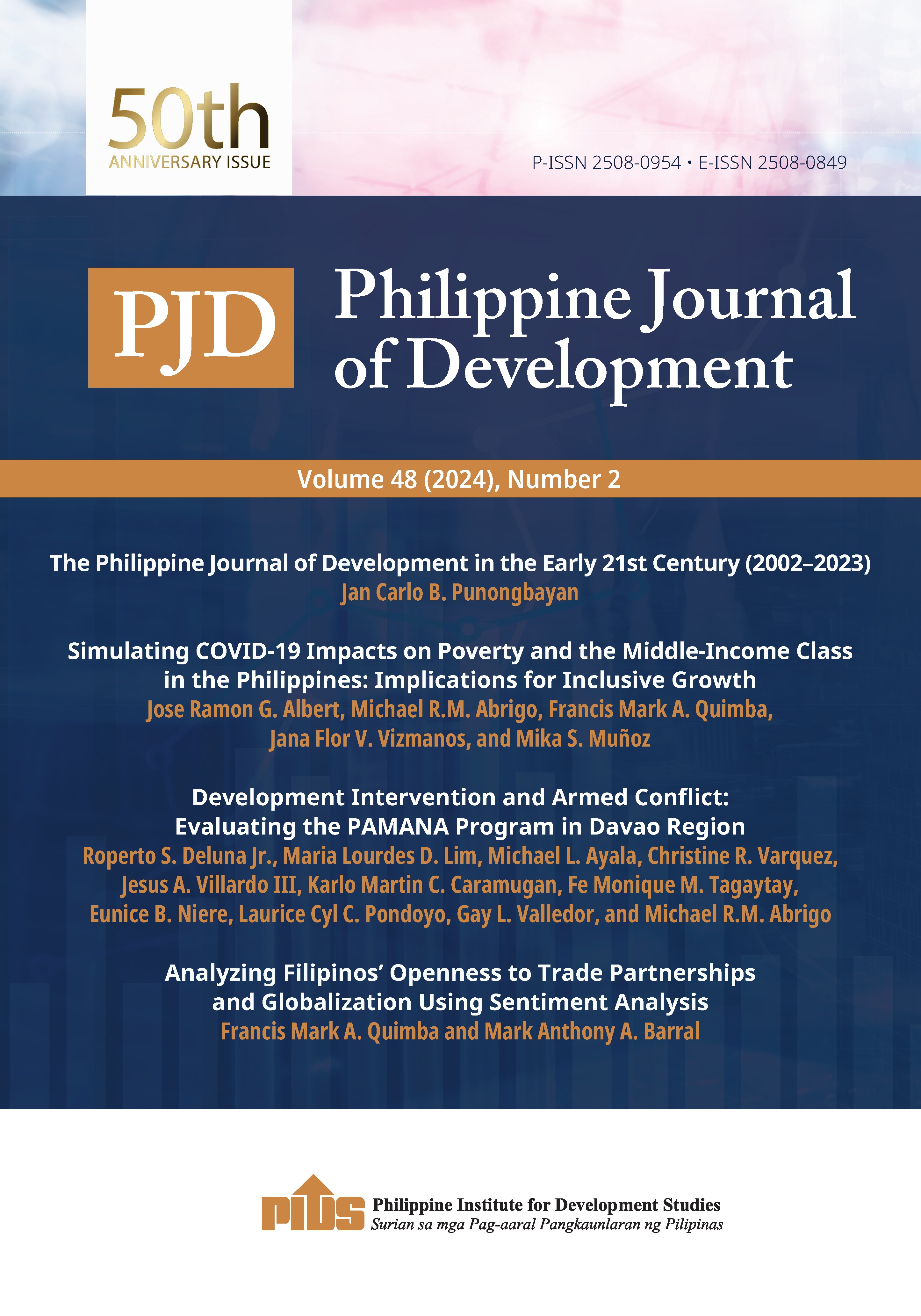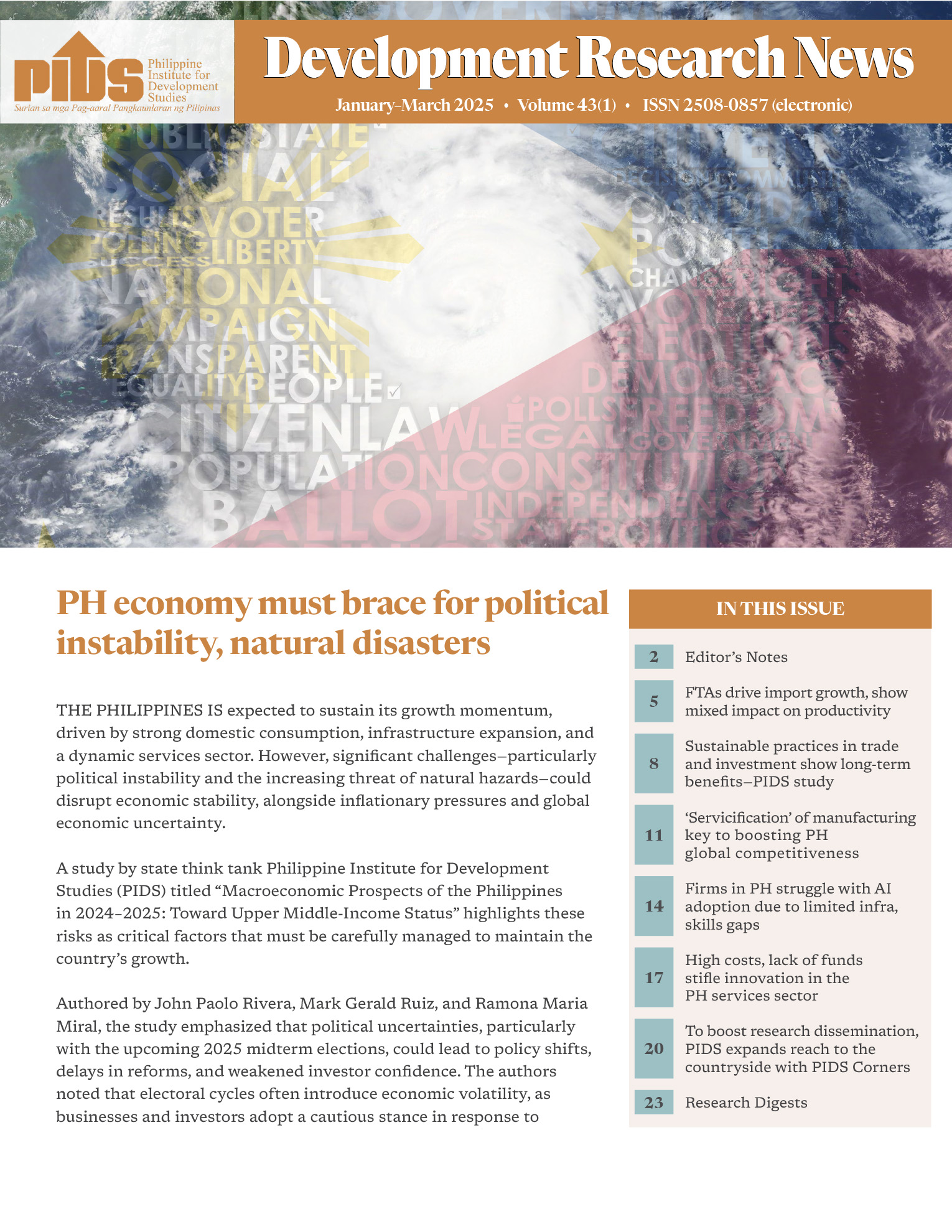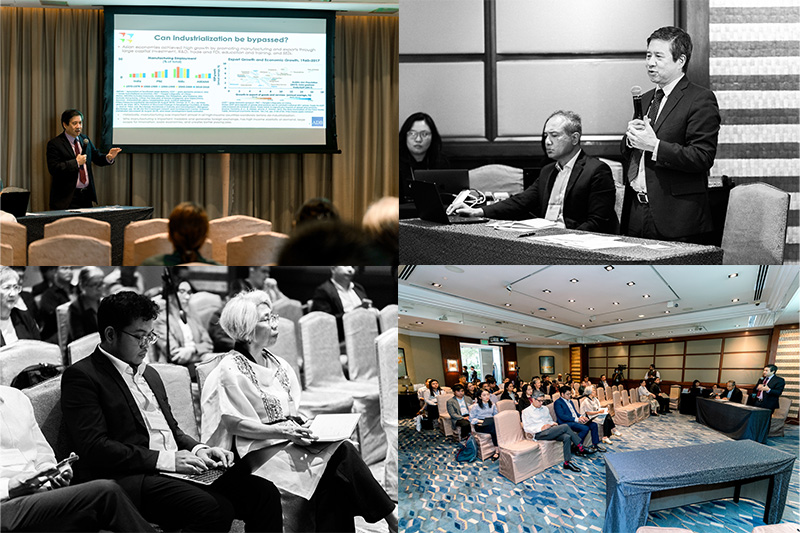Policy researchers at the APEC Study Centers Consortium (ASCC) Conference 2015 held on May 12-13 in Boracay Island deliberated on the importance of enhancing trade and investment patterns and supply chain connectivity to fully reap the benefits of global value chains.
The conference was part of the Second Senior Officials Meeting (SOM2) and Related Meetings of APEC 2015. It was organized by state think tank Philippine Institute for Development Studies and the Philippine APEC Study Center Network in collaboration with the Ateneo de Manila University and the Asian Development Bank Institute.
Trade is central to the world economy and a main driver of global integration. Production chains mean that most products or services are assembled with inputs from many countries. Supply chain connectivity then is vital for the efficient flow of trade among APEC economies by allowing firms to source materials from any part of the world and to deliver products and services to consumers anywhere in the world.
Supply chain connectivity covers trade facilitation, physical infrastructure, and people-to-people exchanges and networks. Coordination and collaboration among producers, suppliers, consumers, and third-party service providers are crucial in supply chain management.
The gains from regional integration—and how extensive the scope of these gains will be—largely depend on the volume and quality of trade and investment patterns, infrastructure, and connectivity in the APEC region. Supply chain barriers cause higher operating and capital expenses, increased risks, and lower trade volume.
The experiences of Thailand and Viet Nam presented by Chanin Mephokee of Thammasat University and Anuwat Chonlapaisan of Dhurakij Pundit University show that gross domestic product per capita (which reflects a country`s purchasing power), real interest rate (which affects the cost of doing business), degree of openness, and exchange rate (in the case of Viet Nam only) influence the trends and patterns of foreign direct investment (FDI). Policies that promote investments and reduce trade transaction costs were found to be crucial to the FDI inflows in both countries. Among these factors, degree of openness is the most important factor that explains FDI behavior,” Mephokee and Chonlapaisan added.
Moreover, Nam Sang-yirl of the Korean Information Society Development Institute emphasized that tariff barriers, which are traditional barriers to international trade, have decreased rapidly under the multilateral trading system of the General Agreement on Tariffs and Trade under the World Trade Organization. She added that APEC has played a leading role in addressing technical barriers to trade (TBT) as well as specific trade controls, particularly the conformity assessment procedures that create unnecessary obstacles to trade.
“Further cooperation among APEC members is needed to reduce TBT, facilitate international trade, and enhance economic growth in the region,” Sang-yirl said.
Nothing can connect economies more significantly than participation of firms in a global network of production activities. Supply chains will continue to have a beneficial impact on economic growth and development in the APEC region. Removing impediments to freer flows of goods, services, capital, and labor has thus become more urgent than ever. ###
The conference was part of the Second Senior Officials Meeting (SOM2) and Related Meetings of APEC 2015. It was organized by state think tank Philippine Institute for Development Studies and the Philippine APEC Study Center Network in collaboration with the Ateneo de Manila University and the Asian Development Bank Institute.
Trade is central to the world economy and a main driver of global integration. Production chains mean that most products or services are assembled with inputs from many countries. Supply chain connectivity then is vital for the efficient flow of trade among APEC economies by allowing firms to source materials from any part of the world and to deliver products and services to consumers anywhere in the world.
Supply chain connectivity covers trade facilitation, physical infrastructure, and people-to-people exchanges and networks. Coordination and collaboration among producers, suppliers, consumers, and third-party service providers are crucial in supply chain management.
The gains from regional integration—and how extensive the scope of these gains will be—largely depend on the volume and quality of trade and investment patterns, infrastructure, and connectivity in the APEC region. Supply chain barriers cause higher operating and capital expenses, increased risks, and lower trade volume.
The experiences of Thailand and Viet Nam presented by Chanin Mephokee of Thammasat University and Anuwat Chonlapaisan of Dhurakij Pundit University show that gross domestic product per capita (which reflects a country`s purchasing power), real interest rate (which affects the cost of doing business), degree of openness, and exchange rate (in the case of Viet Nam only) influence the trends and patterns of foreign direct investment (FDI). Policies that promote investments and reduce trade transaction costs were found to be crucial to the FDI inflows in both countries. Among these factors, degree of openness is the most important factor that explains FDI behavior,” Mephokee and Chonlapaisan added.
Moreover, Nam Sang-yirl of the Korean Information Society Development Institute emphasized that tariff barriers, which are traditional barriers to international trade, have decreased rapidly under the multilateral trading system of the General Agreement on Tariffs and Trade under the World Trade Organization. She added that APEC has played a leading role in addressing technical barriers to trade (TBT) as well as specific trade controls, particularly the conformity assessment procedures that create unnecessary obstacles to trade.
“Further cooperation among APEC members is needed to reduce TBT, facilitate international trade, and enhance economic growth in the region,” Sang-yirl said.
Nothing can connect economies more significantly than participation of firms in a global network of production activities. Supply chains will continue to have a beneficial impact on economic growth and development in the APEC region. Removing impediments to freer flows of goods, services, capital, and labor has thus become more urgent than ever. ###












